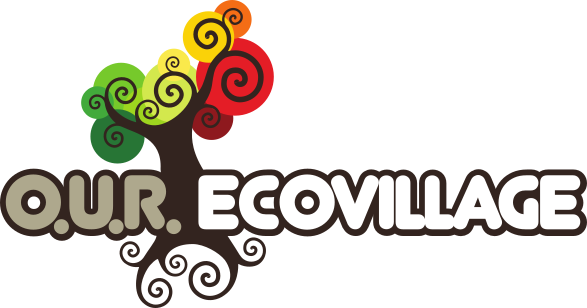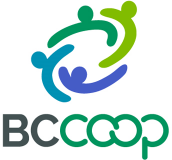Green Burial Initiative
About the Green Burial Initiative
Green Burial describes a family of burial practices that allow for an environmentally-conscious treatment of remains, often with an eye to long term conservation of the land within which the scattering or burial occurs.
Here at OUR Ecovillage, we offer a natural conservation space in which to scatter the cremated remains of loved ones to commemorate their lives; providing the departed with an ecological way to make their final wishes their legacy.
Whether you are here for your own legacy planning, that of a family member or loved one, or simply to better understand green burial, please feel welcomed to explore our information and contact us with any questions you may have.
History of Green Burial
As recent as the 1800s, green burial was arguably the only burial type one could expect to participate in. Traditional North American families cared for their deceased by preparing, dressing, and displaying their loved ones in their own homes.
Formal parlours, with the family’s finest furniture and possessions, often neat, tidy, and rarely used, became popular locations for funeral visits and wakes. Some of the larger homes of this time period would have featured a ‘death door,’ which went directly from the parlour to the outside and used for transporting caskets in and out of the room. Caskets at this time would have been simple wooden constructions, either made at home or purchased at the General Store.
As we know it to be now, the funeral industry began to develop with the American Civil War. Large numbers of soldiers died away from home, and new methods of shipping bodies over long distances became necessary. This need inspired the development of modern-day embalming to preserve a deceased body for transport across the country.
Simultaneously, a shift in space use was occurring. Family burials on privately-owned land began to lose favour and be replaced by park-like cemeteries. The civil war also led to the development of the first military cemeteries in the United States. As the funeral process became consolidated, so too did the industry’s roles and definitions, shaping it into the consumerist process it so often is today.
As with many large-scale industries, there is an associated environmental impact. It is estimated that, in a single year, enough embalming fluid is buried to fill eight Olympic-sized swimming pools. Additionally, enough reinforced concrete is used in caskets to build a two-lane highway between New York and Detroit, and more steel is used than was needed to build the Golden Gate Bridge.
In 1996 the first green cemetery in the United States, Ramsey Creek, was opened. Providing ecologically-friendly burial options with the long-term goal of protecting one million acres of wilderness through their funerary work.
Since its (re)inception, Green Burial has gained popularity in North America, Britain and other locations worldwide. While Green Burial takes many forms and follows many policies depending on the specific site and any overseeing bodies, commonalities include natural spaces, chemical-free preservation methods, simple or non-existent caskets free of endangered woods or chemicals and a commitment to a greener end-of-life event. In many cases, land preservation is also a consideration.
Brandy Gallagher’s Story
Imagine the opportunity for each of us to live our lives focused on creating a legacy. I imagine that every person can find their legacy and purpose in this world. In 1996 I went to the Provincial Government to ask for permission to scatter my mother’s ashes over Brandywine Falls Provincial Wilderness Park, commemorating her incredible work in making Brandywine Falls a protected space in perpetuity.
I was told that it was illegal to scatter the ashes over the falls and that no plaque could be placed beside this beautiful 280 ft waterfall that cascades into a volcanic cauldron. Plaques can only be placed in parks if there is a bench or some such marker to put this on! The story of the amazing woman who pioneered in the wilderness and stood with a shotgun in hand to protect those wild spaces could not be told because her legacy should only fit onto a 3.5” x 5″ commemoration on a bench.
This has never felt complete for me, and I believe we can do it differently. After many conversations with the Green Burial Council, the former owner of the lands of OUR ECOVILLAGE and land protection folks, the hope to bring forward a green burial framework on all grounds that wanted to be protected became a possibility.
In 2010, OUR team wrote the “Commemorative Conservation Scattering Grounds” Policy for the Green Burial Council. A designation in North America for Scattering Grounds being offered at OUR ECOVILLAGE as a pilot with the intention that once we have worked through the framework here onsite, this model can be used for conservation projects across the continent.
I wish to have Commemorative Conservation Scattering Grounds Legacy be here at OUR ECOVILLAGE. I can imagine linking land conservation with the scattering of my ashes alongside a large celebration in the Zero Mile Eatery with a meadow dance floor to dance the night away.
Legacy Planning
Making pre-arrangements for funerals or other end-of-life ceremonies is important. It will ensure that all of your wishes are carried out exactly as you desire while alleviating decisional pressure on friends and family.
At OUR Commemorative Conservation Scattering Grounds, we can work with both pre-planning and those who find themselves needing immediate planning and assistance.
It is often valuable to discuss your wishes with close friends and family members. It may be an opportunity to share why you chose green burial or reassuring family members that you don’t require a permanent headstone or grave marking to feel settled in your final resting place. It is also a valuable time to ask and answer each other’s questions as you prepare for this time of transition together.
At this time, you may also choose to appoint a close family member or trusted friend to help make arrangements and ensure your wishes are carried out when the time comes.
we offer facility-use options for an end-of-life ceremony and are also available to provide catering and meal service., you may also pre-select a tree you would like to have planted in your honour.
While you don’t need to plan every last detail out at this time, it is important to write down anything that is especially important to you or anything that you specifically want to avoid. If nothing else, these guidelines will aid your loved ones in carrying out your wishes.
Some considerations the Livestrong Foundation suggests include the type of service you want, where you want the service to be held, names of people you want to be contacted about the service, names of people you would like to participate in the service, preferences about flowers, music, and donations, specific personal, cultural, and spiritual considerations.
In many cases, pre-paying for funerary services guarantees a ‘locked in’ cost, which may represent savings as compared to the time of your passing. At OUR, we welcome scattering rights contributions at any time and issue a Scattering Rights certificate at the time of donation. Donations include charitable tax receipts and go towards purchasing a conservation covenant to secure the unique land and values of O.U.R. Ecovillage.
Choosing to scatter cremation ashes on OUR grounds is an environmentally sustainable way to commemorate one’s life. Our Grounds provide a natural sanctuary for loved ones to rest and friends and family to visit. Choosing to return to the land means choosing sustainable wellbeing for the land, ourselves, and OUR worldwide village. Together, we can make our final wishes become a lasting natural legacy for generations to come.
Pricing
There are three levels of contribution one can choose when doing end-of-life legacy planning with O.U.R. Ecovillage.
Woodland Contribution ($5,000+)
- Facility use of End-of-Life ceremony
- Recognition on Commemorative Conservation Plaque on Legacy Wall
- One orchard or forest tree
Orchard Contribution ($2,500–$5,000)
- Recognition on Commemorative Conservation Plaque on Legacy Wall
- One orchard or forest tree
Commemorative Contribution ($1,000–$2,500)
- (Minimum donation for scattering rights)
- One orchard or forest tree
Our thanks go out to amazing Village supporter and community member Dinter’s Nursery for their partnership and support in sourcing and providing the commemorative orchard and forest trees for our precious legacy leavers.
Additional offerings
- Ceremony and Events: Honour loved ones with a sacred ceremony or end of life celebration
- Facility and Site Use: We have a variety of beautiful indoor and outdoor spaces for ceremonies, gatherings, and local food feasting.
- Meal Services: breakfast, lunch, dinner, and event catering are available from OUR Zero-mile eatery, offering mostly organic, our land, and always yummy food prepared by our on-site culinary artists.
- Eco-friendly caskets and urns can be made onsite by OUR craftspeople and building team using reclaimed wood and sustainable materials and practices. Please contact us if you would like to discuss design and material options.
Cremation and Scattering
An alternative to body burial, cremation makes use of high-temperature burning, vaporization, and oxidation to reduce a body to its basic chemical compounds. These ash-like remains are then able to be buried, scattered, or retained by family members for personal preservation.
Cremation dates back at least 20,000 years to partial remains found in Australia and is practised by many of the world’s religions and spiritual groups. The choice to cremate is personal but may be driven by a preference to avoid slow decomposition or an environmentally-driven desire to avoid some of the toxic by-products of an intact burial, often caused by embalming fluids such as formaldehyde.
At 80%, British-Columbia has one of the highest cremation rates in the world! One study found that 160 kilograms of carbon dioxide are produced on the day of cremation, almost four times more than a burial. While cremation is energy-intensive and contributes to our carbon footprint, over the long term, the maintenance of a gravesite, such as watering and mowing, generates more carbon dioxide.
As an additional way to minimize the environmental impact of scatterings at OUR Commemorative Conservation Scattering Grounds, we require all cremations to take place in an environmentally-friendly manner and ask that remains be placed in an ecologically-sound container for transportation to the crematorium. According to BC regulations, cremation vessels must be free of plastic, fibreglass, foam or Styrofoam, rubber, polyvinyl chloride, and zinc. They must also be of sufficient strength to contain and move human remains, capable of being closed and constructed so that it does not leak. The funeral director or crematorium will also be required to sign an internment form specifying that they used no embalming fluid and that the scattering urn is biodegradable and free of toxins.
OUR Scattering Techniques
Casting Ashes:
This is the act of tossing the ashes to the wind. Usually, this is done by one or more individuals while others look on with care and consideration. One should consider wind direction to ensure that ashes are cast downwind. The ashes are mostly made up of a dense sand-like matter and will quickly fall to the ground, but some of it will be a fine powder, which will form a whiteish grey cloud.
Ringing Ashes:
A ring of ashes is formed on the ground around an object or group of objects by holding the scattering urn close to the ground and pouring out a ring of ashes. Friends and family members can create an outer ring around the ashes and take turns stepping into the ring to share words of remembrance.
Raking Ashes:
Cremated ashes are poured from the scattering urn evenly on loose soil and raked into the ground at the conclusion of the ceremony.
Frequently Asked Questions
What is the difference between making a donation and purchasing a traditional cemetery spot?
When you purchase a traditional cemetery spot, you are reserving a specific space, in your name, in a location designed for the internment of bodies for perpetuity. In practical terms, you will be helping pay for the upkeep of the cemetery, paying for staff on site, and contributing to the running costs of the land.
When you make a donation for obtaining scattering rights, you are contributing to placing a protective land covenant on the entire 25 acre site of OUR Ecovillage. Your Conservation Grounds Scattering rights are conferred as a thank you for donating, not as an outright purchase. OUR overhead costs are negligible compared to those of a traditional cemetery, so that more of your money goes directly to helping protect OUR Ecovillage and its work.
What happens if the O.U.R. land is sold or comes under different management?
This is what is being working on currently — and we aim to ensure that no harms of development, mainstream cultures ‘OWNERSHIP’ over land (vs. ‘ACCESS’ and honouring of Traditional lands and cultural work. We intend for OUR Ecovillage to be placed in protective trust for all future generations …..and those who have gone before us as well as family and friends of these loved ones.
Can my arrangements be altered or cancelled?
Contributions are donations and are therefore non-refundable. In regards to cancellation of all other event services, 50% of the fee paid to O.U.R. Ecovillage Cooperative, which is required on the day arrangements are made, will be refunded.
Is the contribution I have made guaranteed against inflation?
Yes, the contribution will not be affected by inflation.
Who provides the end-of-life celebration services?
Your contribution is not associated with end-of-life services. Arrangements may be made with ceremonialists of your choosing.
What happens if death occurs before I have made my contribution?
The outstanding contribution amount must be paid as a lump sum at the time of arranging the scattering.
Will there be anything extra to pay before or at the time the scattering is performed?
There is an administrative fee of $150 that must be paid at the time arrangements are being made.
Who performs the scattering of the cremated remains?
To preserve the natural environment, personnel from O.U.R. will assist with the scattering process. You or your chosen ceremonialist should liaise with O.U.R. to make arrangements when the time comes. The cost of this is included with the $150 administrative fee.
What sort of site maintenance will OUR carry out around the Scattering Grounds?
OUR Commemorative Conservation Grounds, outside of pathways, will be kept in a natural state. Maintenance crews will ensure that bridges are kept in a safe condition and above water levels at all times. Branches will be trimmed where they interfere with paths, and walkways will be kept clear of large debris.
What is your visitor policy?
Visitors are permitted to visit OUR Commemorative Conservation Grounds during daylight hours, most everyday of the year (some holidays come into affect). All visitors and guests who want to walk the grounds are asked to give prior notice and to check in at the office upon arrival. Guests must sign a “Waiver and Release of Liability, and Photographic Release” at our office. This protocol is in place so we are aware of who is on site at all times.
Individuals may not bring pets on the Grounds and are encouraged to park either in the parking lot just off Baldy Mountain Road or in the designated parking area in front of OUR office.
As the Scattering Grounds encompass a delicate ecosystem, visiting the immediate area around where a loved one’s ashes are at rest is encouraged and visitors are requested to stay on pathways. However, if you do feel you must leave the designated walkways, we ask that you take special care to avoid stepping on plants, and request that, as much as possible, you travel on existing trails or other less sensitive areas. We also request that visitors carry a communication device with them in case they lose their bearings while on site.
Finally, we request you notify our office in advance if a ritual is being held, as certain ceremonial elements, such as loud music, may disturb the wildlife.
Are the Grounds wheelchair accessible?
Unfortunately, at this point in time not all of the Grounds are purposely maintained for wheelchair access, however there are not specific barriers to wheelchairs other than the uneven nature of the pathways.
What will the day of the scattering look like for family and loved ones on site?
Individual experiences will vary and be customized to your unique wishes and requirements.
Families and loved ones arrive with the cremated remains in an urn at an agreed upon time, and are greeted by the coordinator in the Healing Sanctuary. Those taking part in the ceremony will either have been pre-directed by the departed as to where they would like their ashes to be scattered or buried; will have considered an area during the preliminary meeting prior to the day of the ceremony, or may make a decision as to location on the day the ceremony is performed.
In terms of the actual scattering, the following rite options exist:
- A coordinator can perform the rite with the party watching.
- The party can perform the rite under OUR guidance.
How much or how little individuals participate is completely up to them, and any combination of these proceedings can take place. However, in every case a coordinator is present. This is to ensure that the soil composition remains intact according to OUR conservation guidelines and principles.
Do you keep a record of where ashes were scattered? Can I access that record?
While we keep internal records of the GPS coordinates of the placement of ashes, legally we are unable to provide this information to individuals and families for their own personal use. It is therefore our recommendation that individuals keep their own record of where ashes have been placed.
Can ashes be re-gathered following scattering?
Unfortunately, due to the nature of both the grounds and the scatterings themselves, re-gathering the cremated remains is not possible. Should people anticipate the need to revisit the ashes of their loved one at any given time, we encourage families to keep a small portion of the ashes for alternate placement.
Is there a maximum number of spaces available in the Scattering Grounds?
OUR grounds are not limited to a maximum capacity.
Can I put up a permanent marker by the remains?
Creating permanent monuments to mark the space where ashes are placed is not permitted. However, burying or spreading ashes under a pre-existing man-made or natural formation is acceptable. Included in the contributions is the option to commemorate loved ones in the form of planting orchard or forest trees.
Downloads & Useful Links
OUR Commemorative Conservation Grounds pamphlet
OUR Commemorative Conservation Grounds Application Form
OUR Commemorative Conservation Grounds Scattering Form & Waiver
OUR Commemorative Conservation Grounds Map
OUR Commemorative Conservation Grounds Facilities Use agreement
For the Press
Large-size images of the Commemorative Conservation Scattering Grounds are available for download on our Flickr page.
Light coming through trees in the Conservation Grounds
Pastoral pond setting in the Conservation Grounds
Past press releases
March 22, 2011–Launch of the Commemorative Conservation Scattering Grounds
Bereavement & Grief Resources
Association of Death Education and Counseling
Canada’s Grief Resource Centre
Canadian Integrative Network for Death Education and Alternatives
Compassionate Friends of Canada
Internet Grief Community and email support groups
Mixed group of 115 grief and bereavement resources
Canadian Foundation for the Study of Infant Deaths
Resources for Grieving Children
Guiding Kids Through Life’s Storms
Hospice & Palliative Care Resources
Canadian Hospice Palliative Care
Pet Loss
10 Tips On Coping With Pet Loss
Canadian Centre For Pet Loss Bereavement
Miscellaneous
Funeral Service Association of BC
Canada Purple Shield Funeral Plan
STOP Unwanted Mail to Deceased
Canadian Resource Centre for Victims of Crime
Harold W. Wallace Cremation and Burial Centre
Imperial Evergreen Casket Corporation (Burnaby, BC)
Simple Pine Boxes (Prince George, BC)
Bereavement & Grief Resources
Last Post Fund (Canadian Veterans)







